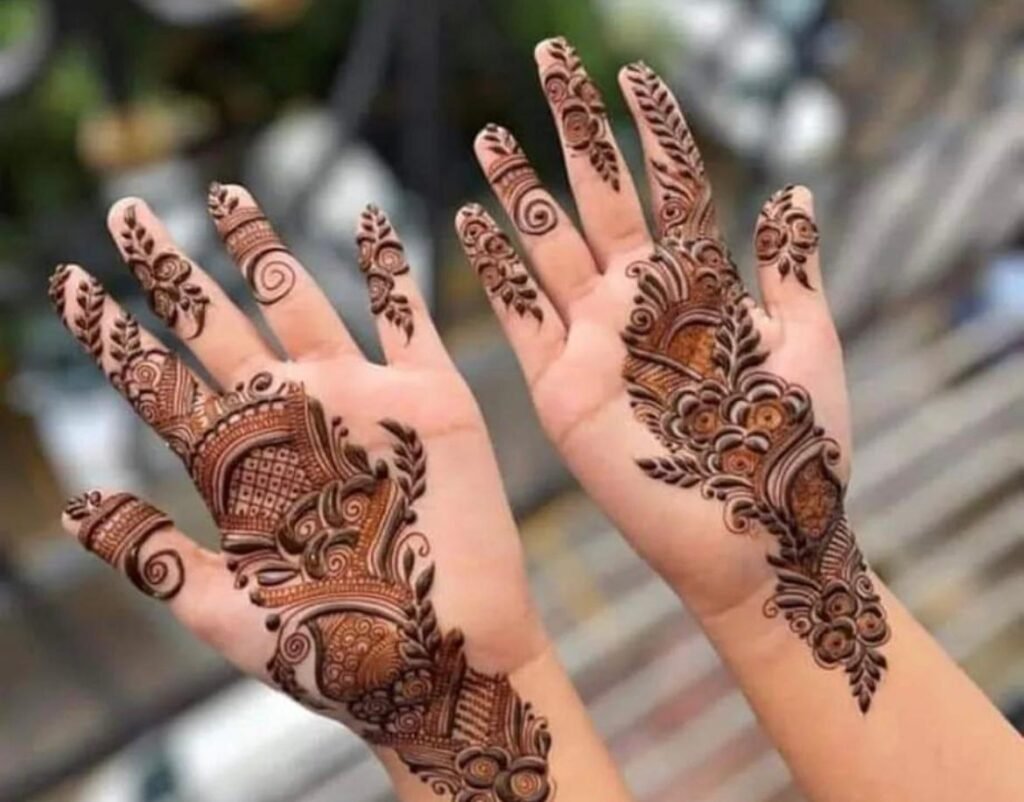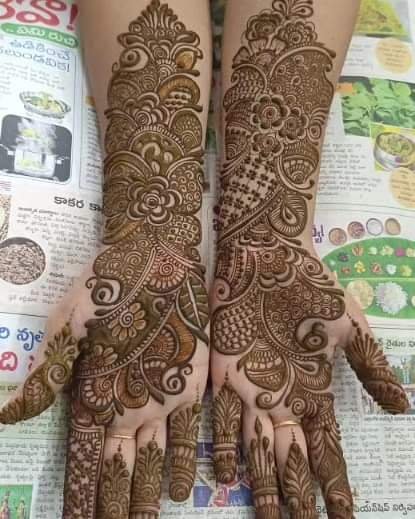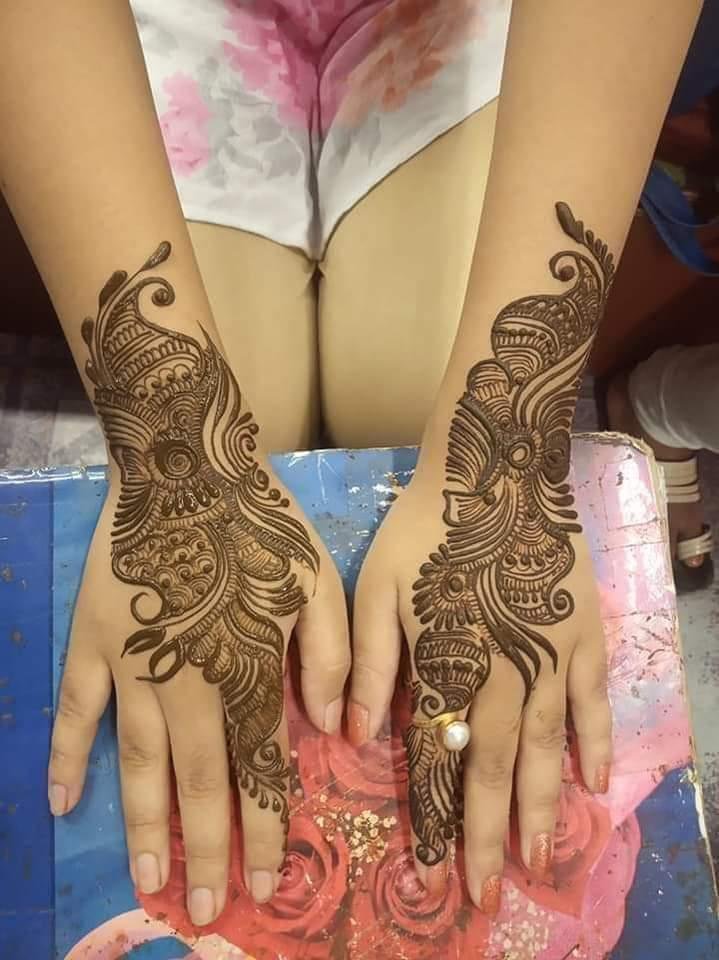Rahul Mehandi Artist
phone :-
09111604744
Rahul mehandi Artist about :-
Mehndi artists like Rahul typically specialize in creating intricate designs using henna paste. They often have their unique styles and techniques, ranging from traditional patterns to more contemporary and innovative designs.
These artists may work at various events such as weddings, festivals, and cultural gatherings, where mehndi application is a popular tradition. They often have a keen eye for detail and skillfully craft designs based on their clients' preferences and the occasion.
If you're interested in learning more about a specific mehndi artist named Rahul or their work, you may want to search online for their portfolio, social media profiles, or any articles or features that may have been written about them. Additionally, you could reach out to local mehndi salons or communities where they might be known.

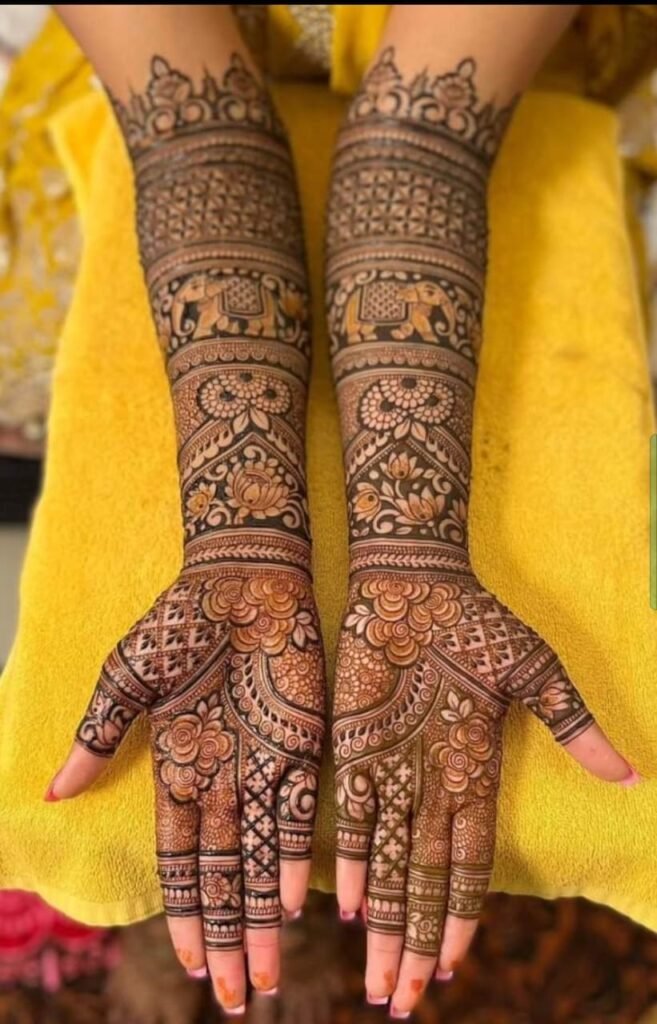

Indian Mehndi
Indian mehndi designs are diverse and vibrant, reflecting the rich cultural heritage of India. They vary from region to region, with distinct styles such as Rajasthani, Gujarati, Marwari, etc. Indian mehndi designs are characterized by their complexity and attention to detail. They often include peacocks, elephants, mango leaves, and other traditional motifs, along with intricate patterns and shading techniques.
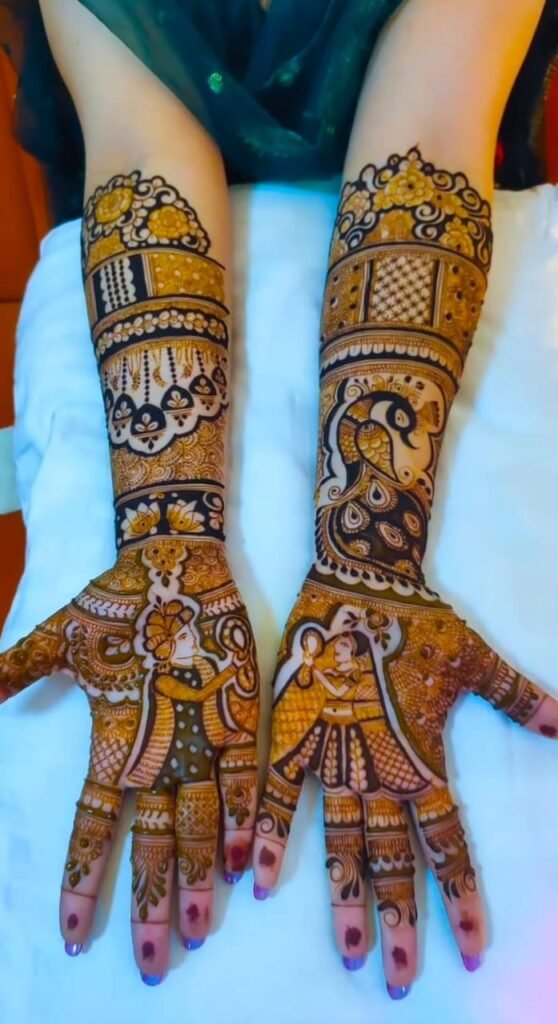
bridal mehandi
Bridal mehndi, also known as henna, is an ancient form of body art that has been practiced for centuries in various cultures, particularly in South Asia, the Middle East, and North Africa. It holds significant cultural and ceremonial importance, especially during weddings.
Cultural Significance
Mehndi is considered auspicious and symbolizes love, prosperity, and good luck. It's an integral part of pre-wedding rituals in many cultures, including Indian, Pakistani, and Middle Eastern weddings. Application Process: Bridal mehndi is usually applied on the hands and feet of the bride a day or two before the wedding ceremony. Intricate patterns are drawn using henna paste, which is made from dried leaves of the henna plant mixed with water or other natural ingredients. The paste is applied using cones or syringes, and once dried, it leaves behind a reddish-brown stain.
Designs and Patterns
Bridal mehndi designs vary from region to region and often include motifs such as flowers, paisleys, mandalas, peacocks, and intricate geometric patterns. The designs can be simple or elaborate, depending on the preferences of the bride and the cultural traditions.
Symbolism
Each element of the mehndi design may hold symbolic significance. For example, the bride's initials or her groom's name might be hidden within the intricate patterns. Other symbols may represent fertility, love, or prosperity.
Ceremonial Importance
Applying bridal mehndi is not only a beautification ritual but also a social and cultural event. It's often accompanied by music, dancing, and celebrations, bringing together family and friends to bless the bride-to-be and celebrate the upcoming union.
Post-Wedding Traditions
In many cultures, the darkness of the mehndi stain is believed to signify the strength of the bond between the couple. It's also customary for the bride not to perform any household chores until the mehndi fades away completely, giving her some time to relax and enjoy the initial days of her marriage.
Overall, bridal mehndi is a beautiful and meaningful tradition that adds charm and elegance to wedding celebrations, while also honoring cultural heritage and customs
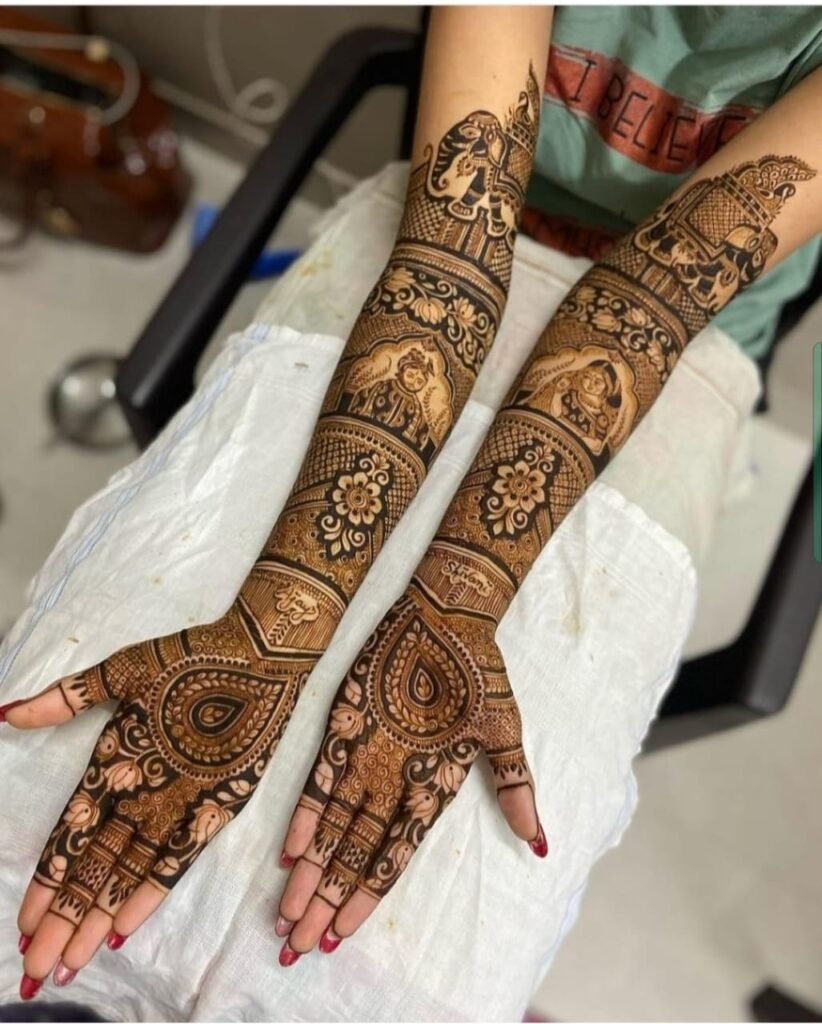

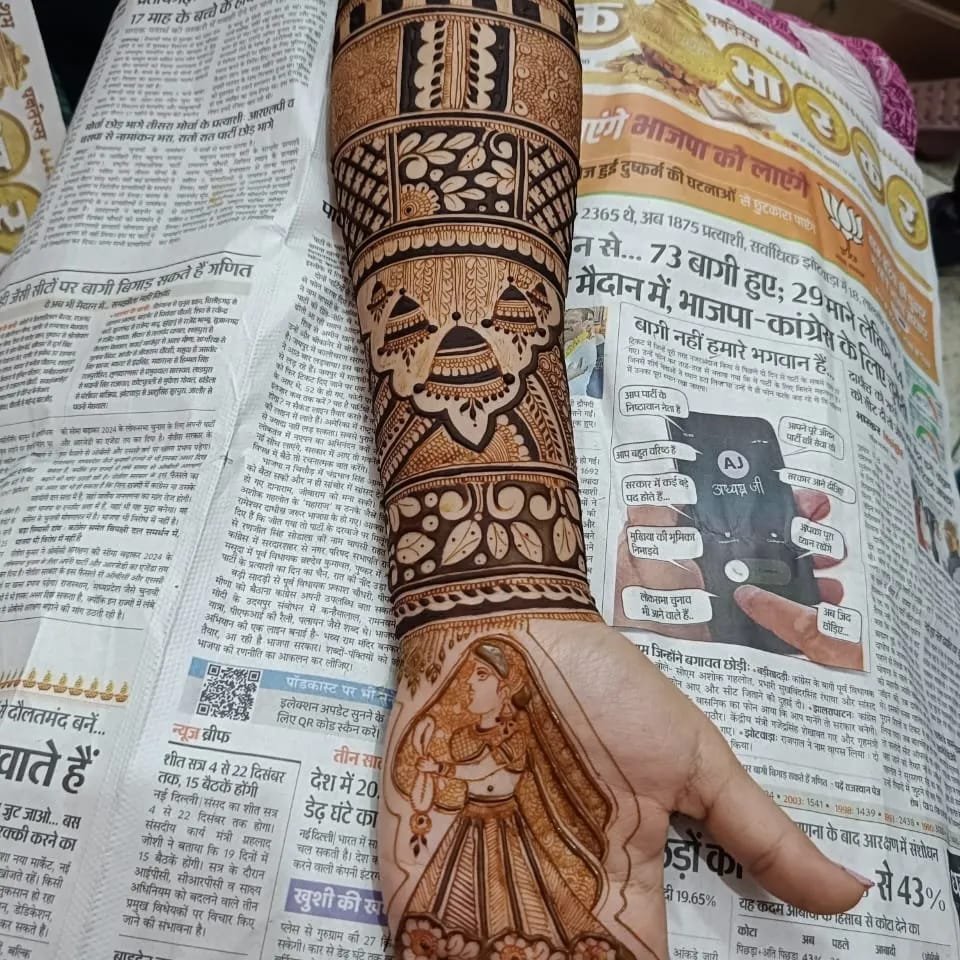

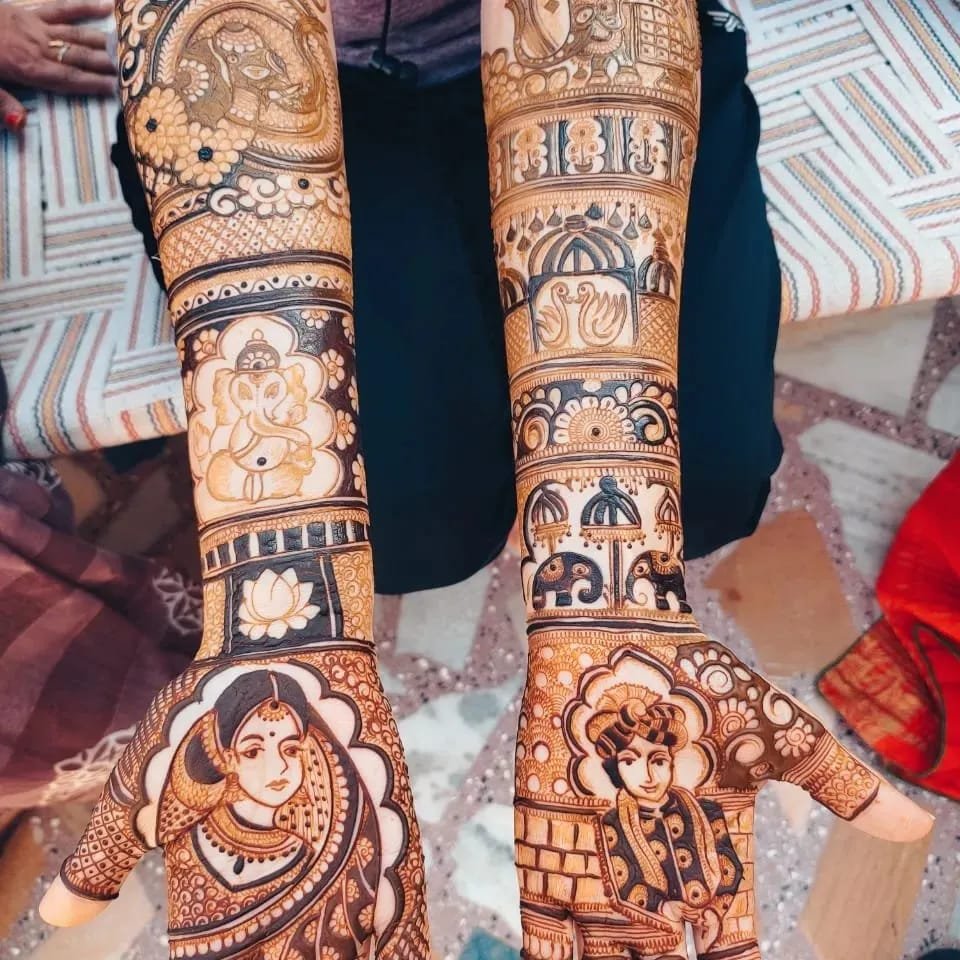

arabic mehandi :-
Arabic mehndi, also known as henna, is a form of temporary body art that originated in the Middle East, particularly in Arab countries. It involves intricate designs drawn on the skin using a paste made from the leaves of the henna plant. Arabic mehndi designs are characterized by their elaborate patterns, bold lines, and floral motifs.
Here are some key features of Arabic mehndi:
Floral Patterns
Arabic mehndi designs often feature elaborate floral patterns, including roses, lotuses, and other blooms. These floral motifs are intricately drawn and can cover a large area of the skin.
Bold Lines and Intricate Details
Arabic mehndi designs typically incorporate bold lines and intricate details, creating a visually striking appearance. The designs may include geometric shapes, paisley motifs, and other decorative elements
Finger-Tip Designs
Arabic mehndi designs often extend to cover the fingertips, creating a seamless flow of patterns from the hand to the fingers. This enhances the overall aesthetic appeal of the design.
